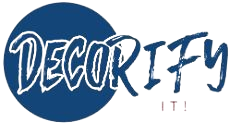Owning a home is a dream for many, but it can quickly turn into a nightmare if your house becomes a money pit. Hidden problems can drain your wallet and cause stress. Let’s explore how to spot and fix the costliest issues in your home.
Hidden Leaks: The Silent Wallet Drainers
Water leaks are sneaky. They can hide behind walls, under floors, and in ceilings. You might not see them, but they can cause big problems. According to Susannah Wilson, a home inspector and founder of “House Wise,” hidden leaks can silently drain your wallet over time. She advises getting a professional inspection to uncover these issues before they spiral into major repairs.
How to Spot Hidden Leaks
- Check Your Water Bill: If it suddenly spikes, you might have a leak.
- Look for Water Stains: Brown or yellow stains on walls or ceilings are a sign.
- Listen for Drips: Sometimes you can hear a leak even if you can’t see it.
Fixing Hidden Leaks
Once you find a leak, fix it right away. Ignoring it can lead to mold, structural damage, and higher repair costs. Mike Johnson, a master plumber and owner of “Johnson & Sons Plumbing,” says ignoring maintenance for a “quick fix” can lead to far more expensive repairs later. Catching issues early prevents snowballing costs.
Poor Insulation: The Energy Sucker
Improper insulation can make your home uncomfortable and your energy bills skyrocket. David Miller, a certified energy auditor and author of “The Sustainable Homeowner’s Guide,” says investing in energy efficiency upgrades may seem expensive upfront, but they can pay for themselves in the long run through reduced energy bills and increased home value.
How to Spot Poor Insulation
- Drafts: If you feel drafts near windows or doors, your insulation might be lacking.
- Uneven Temperatures: Rooms that are too hot or too cold can indicate poor insulation.
- High Energy Bills: If your bills are higher than your neighbors’, you might need better insulation.
Fixing Poor Insulation
Adding insulation to your attic, walls, and floors can make a big difference. It keeps your home warm in winter and cool in summer. Plus, it saves you money on energy bills.
Poor Ventilation: The Hidden Health Hazard
Poor ventilation can lead to mold, mildew, and poor air quality. This not only affects your health but can also damage your home. Susannah Wilson warns that poor ventilation can silently drain your wallet over time.
How to Spot Poor Ventilation
- Condensation: If you see condensation on windows or walls, you might have a ventilation problem.
- Musty Smells: A musty smell can indicate mold or mildew.
- Mold Growth: Visible mold is a clear sign of poor ventilation.
Fixing Poor Ventilation
Improve ventilation by installing exhaust fans in bathrooms and kitchens. Make sure your attic and crawl spaces are well-ventilated. This helps prevent mold and keeps your home healthy.
Foundation Problems: The Big Money Pit
Foundation issues are serious. They can cause cracks in walls, uneven floors, and doors that won’t close. Sarah Thompson, an architect and home design expert for “Modern Living Magazine,” says a beautiful garden may add curb appeal, but if your roof is leaking or your foundation is cracking, it’s just a Band-Aid on a deeper problem. Prioritize structural integrity before aesthetics.
How to Spot Foundation Problems
- Cracks in Walls: Look for cracks, especially around windows and doors.
- Uneven Floors: If your floors are sloping or uneven, you might have a foundation problem.
- Sticking Doors and Windows: If doors and windows are hard to open or close, it could be a sign.
Fixing Foundation Problems
Foundation repairs can be expensive, but they’re necessary. Ignoring them can lead to more damage and higher costs. Get a professional to assess the problem and recommend the best solution.
Deferred Maintenance: The Costly Delay
Neglecting regular maintenance can lead to bigger problems and higher costs. The National Association of Realtors (NAR) study, “The Cost of Deferred Maintenance,” highlights the significant cost difference between early intervention and delayed repairs.
How to Spot Deferred Maintenance
- Peeling Paint: This can lead to wood rot and other issues.
- Clogged Gutters: They can cause water damage to your roof and foundation.
- Overgrown Landscaping: It can hide problems like foundation cracks or pest infestations.
Fixing Deferred Maintenance
Stay on top of regular maintenance tasks. Paint your home, clean your gutters, and trim your landscaping. This prevents small problems from becoming big ones.
Energy Efficiency Upgrades: The Smart Investment
Upgrading your home to be more energy-efficient can save you money and increase your home’s value. The U.S. Department of Energy (DOE) study, “Energy Efficiency in Residential Buildings: Impacts on Energy Consumption and Home Value,” explores the correlation between energy-efficient home improvements, reduced energy consumption, and potential increases in home value.
How to Spot Energy Inefficiency
- Old Windows: Single-pane windows are less efficient than double-pane ones.
- Outdated Appliances: Old appliances use more energy.
- Inefficient Lighting: Incandescent bulbs use more energy than LED bulbs.
Fixing Energy Inefficiency
Upgrade to energy-efficient windows, appliances, and lighting. These changes can lower your energy bills and make your home more comfortable.
Personal Anecdotes: Real-Life Lessons
When we bought our first home, we were thrilled. But soon, we noticed our energy bills were sky-high. We discovered our insulation was poor. We added insulation to our attic and walls, and our bills dropped. It was a big upfront cost, but it paid off in the long run.
Another time, we ignored a small leak in our bathroom. We thought it was just a minor issue. But it turned into a major problem, causing mold and water damage. We learned the hard way that it’s better to fix issues right away.
Conclusion
Owning a home comes with responsibilities. Spotting and fixing problems early can save you money and stress. Don’t let your home become a money pit. Regular maintenance, energy efficiency upgrades, and professional inspections can keep your home in good shape and your wallet happy.
Remember, hidden leaks, poor insulation, poor ventilation, foundation problems, and deferred maintenance are the costliest issues. By addressing them early, you can avoid turning your dream home into a financial nightmare.
Citations:
- Wilson, Susannah. Home Inspector and Founder of “House Wise.”
- Miller, David. Certified Energy Auditor and Author of “The Sustainable Homeowner’s Guide.”
- Johnson, Mike. Master Plumber and Owner of “Johnson & Sons Plumbing.”
- Thompson, Sarah. Architect and Home Design Expert for “Modern Living Magazine.”
- National Association of Realtors (NAR). “The Cost of Deferred Maintenance.”
- U.S. Department of Energy (DOE). “Energy Efficiency in Residential Buildings: Impacts on Energy Consumption and Home Value.”
By following these tips and staying proactive, you can keep your home in great shape and avoid costly repairs. Happy home owning!




